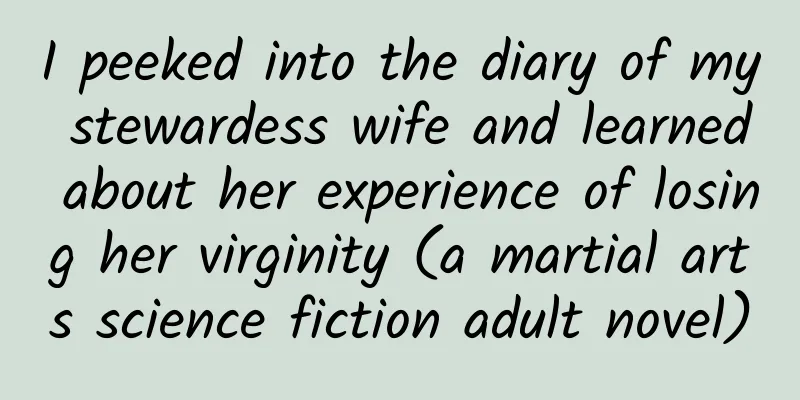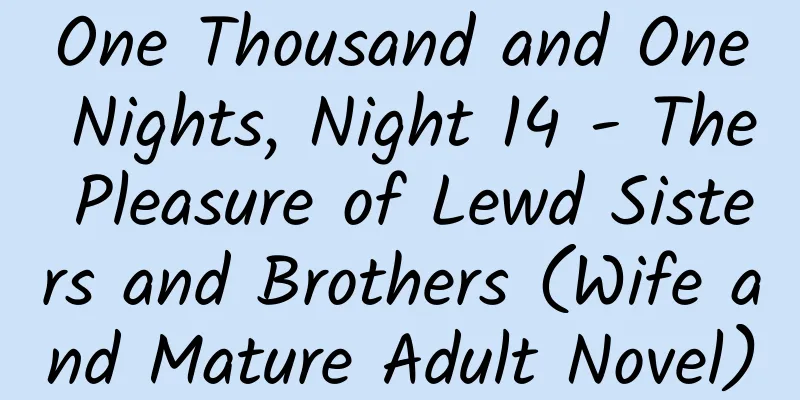|
"Women love beauty, men love lust." This is the general view of people on the aesthetic orientation of both sexes. We don’t know how to accurately interpret the multiple meanings of “lustful”. The "Ode to Dengtu's Lust" which was very influential in the history of literature is no longer enough to summarize and does not give us any special feeling today. It just shows that ugly men still love beautiful women, and men are equal in their lustful sexual psychology and sexual aesthetic needs, and it will not change because of whether their "lust" is equal to that of beautiful women.
The "lust" between the same sex seems to be limited to men, such as the love for "male beauty" and "pedophilia". As for the aesthetic tastes among women, I don’t think I’ve ever seen beauty being regarded as “color”.
If you take it a little more seriously, you will find that although "color" and "beauty" are essentially the same thing. The difference between looks and beauty only appears because the scope of the two words is limited. If it is also used to describe women, there is no difference. If you look more carefully, you will find that "color" and "beauty" have obvious yet subtle differences in people's sexual and aesthetic psychological orientation. "Love of beauty" is an introverted, closed, and self-centered aesthetic orientation, while "lust" is an extroverted, offensive, and proactive aesthetic orientation. Women's love of beauty is a natural instinct determined by their gender. "Women dress up to please themselves" also determines that women's love of beauty is largely to satisfy men's sexual aesthetic needs; it seems that there is no sexual element. Men's lust seems to have only sexual aesthetic intentions. When a man appreciates a woman's beauty, his eyes can be seen as "lustful" if he is not careful. But that’s not entirely true. Women love beauty, which is a nature determined by their gender. "Women dress up to please themselves", which also determines that women's love of beauty is born to satisfy men's sexual aesthetic needs. The "lust" in men does not simply refer to the beauty of women, but the enjoyment of the beauty of the opposite sex. Therefore, men appreciate women's beauty.
If you are not careful, people will see that you are lustful.
So, are only men lustful?
Scientists have given a negative answer to this question.
Keen Kendrick, a behavioral scientist at the Babraham Institute in Cambridge, UK, conducted a very interesting experiment that lasted for 10 years.
Based on his own aesthetic view of sheep, he selected 50 "handsome men and beautiful women" of equal number of males and females, took lifelike large photos of them and hung them at the entrances of 50 sheep pens.
Then let the sheep participating in the experiment choose which pen door to enter. The results showed that the sheep did not enter the enclosure randomly. They only entered the enclosure with photos of their favorite "handsome men" or "beautiful women" and chose the objects they liked respectively, which clearly showed that this choice was based on the psychological basis of sexual aesthetics. Moreover, they persisted in this liking for two years, and only entered the enclosure with photos of their favorite "handsome men" or "beautiful women" during those two years. Moreover, it is obvious that this selection is based on the psychological basis of sexual aesthetics. The ram chooses the ewe it likes, and the ewe chooses the ram it likes. There is also same-sex selection, but it is rare. There was no difference between ewes and rams in the performance of the two sexes in terms of choice.
There is another animal experiment that is even more interesting.
Scientists selected beautiful and ugly roosters and hens based on their own aesthetic taste. He discovered that these chickens, regardless of gender, appearance or ugly, would chase each other, which were also considered beautiful. When the ugly hens are treated coldly by the pretty roosters, they will automatically lie down, slightly spread their wings, and express their pitiful sexual desire and waiting with an unusual "cuckoo" and a stupid "lustful" look...
Similar experiments have led scientists to discover that humans and animals have very similar sexual aesthetics. The experimental results also show that, regardless of whether it is sheep or chickens, there is no significant difference in the comparable coefficients between males and females in the probability of chasing and harassing beautiful objects, which means that ewes and hens are just as lustful.
In fact, this phenomenon also exists in our lives.
I have a 22 year old male neighbor. His appearance, figure and skin color all make him a perfect handsome man. He works as a material custodian in a clothing company. He complained that the female workers would come to him for even the smallest problems instead of going to others, and it was endless and made him feel very tired. He has requested to transfer the products to the finished product warehouse for safekeeping.
In ancient texts, there are also many records of handsome men being chased by women in public. It is said that when Wei Jie, a handsome man in the Jin Dynasty, went out on the street, many women gathered around him and chased him, throwing flowers and fruits at him, leaving behind the allusion of "looking at Wei Lang to death". Li Bai's poem also describes the beautiful and talented Cui Songzhi of the time who rode back to the city on horseback after getting drunk, attracting women to chase after him, vying to see his "jade-staggering" beauty, which became a legend for an era. ...There is just one thing: the records of women chasing after handsome men, including poems by poets like Tao Yuanming and notes and sketches like "A New Account of Tales of the World", changed their flavor and came to an abrupt end when "Neo-Confucianism" was promoted in the Song Dynasty. There was no longer any sense of beauty that both sexes enjoyed, but it became a kind of evil. In particular, women's "lust" for men is invariably described as despicable sexual seduction and moral corruption. It was also during that period when feudal ethics between the sexes were strengthened that the lust expressed in Dengtuzi's Lustful Fu changed the author's and people's understanding of lust as a sexual aesthetic psychological instinct, and made "lust"
The connotation of it has become a dirty sexual motive for men towards women with sexual purposes.
Some scholars have also discovered through research that before the Song Dynasty, the titles of "beauty" and "beautiful woman" were not limited to women. In the sense of "beautiful people", it is also used for men. People of the same sex can address each other in this way, men can address women and women can address men in this way, which proves the parity and equality reflected in the aesthetic values between the two sexes at that time.
Phenomena are just phenomena, only science can explain the essence.
In the 16th century, German doctor Weil conducted research on a disease that was prevalent among nuns in monasteries: they would experience hallucinations during sexual activity, see attractive men coming towards them, and then go into a coma and convulse. This disease is a kind of "hysterical" attack that we now understand very well, that is, hysteria and mental disorder. While people generally believed at the time that this was a case of "devil possession," this doctor boldly suggested that it was a mental illness caused by the sexual repression of women due to the church's strict sexual taboos. He suggested that the monastery should not confine the nuns in an environment that only has women, but should allow them to see men appropriately, such as the strong and handsome shepherd boys that they almost unanimously saw in their hallucinations.
After that, Freud, a Swedish doctor who made significant contributions to sex science, proved from his extensive research practice that women, like men, have strong sexual aesthetic desires. In fact, women are more likely to have this kind of sexual aesthetic fantasy. When men talk about women, they tend to focus on a specific existing object.
When women talk about their appreciation for men, they often outline a more perfect and beautiful fantasy in their minds beyond the specific object. The sexual repression that cannot turn this fantasy into reality can cause female neurosis and psychosis, including headaches and sexual organ spasms.
W. Masters, an American psychiatrist and sexologist, has observed and studied the various manifestations of young male and female patients suffering from sexual depression (also known as "adolescent schizophrenia") for more than 10 years. He pointed out that clinically, there is no gender difference in the occurrence of such patients actively expressing sexual desire to the opposite sex. Moreover, no obvious differences were found between men and women through testing of the patient's computer response, blood flow response, and responses of multiple biochemical indicators when the disease occurs. That is to say, women and men show the same sexual physiological responses to aesthetics and desire. In a sensitive reaction experiment conducted on approximately 1,000 subjects, modern scientific and technological means of monitoring the blood flow response of the reproductive organs in response to beautiful and ugly static images of the opposite sex proved that 58% of men responded to beautiful women, and a surprisingly high 42% responded to ugly women; 81% of women responded to handsome men, and less than 12% responded to ugly men. Regarding images of the opposite sex, 28% of men respond to women with masculine tendencies, while 64% of women respond to men with feminine tendencies. Moreover, less than 8% of women have a clear disgust towards men with feminine tendencies and have no reaction, while as many as 20% of men have a clear disgust towards "tomboy" and have no reaction.
The scientist said humorously: "I should ask the stars and bosses in the entertainment industry for compensation for my discovery, because I told them how to design the image of male singers so that more girls will become crazy and faint at the concert."
He also predicted: "The scientific community will one day tell everyone what organs, functions, and even genes determine the sexual attraction of humans to the opposite sex. Perhaps, we will find that women, like men, have the same substances and substance equivalents that cause them to have sexual desire for beautiful people of the opposite sex, such as some biological peptide substances."
… |










